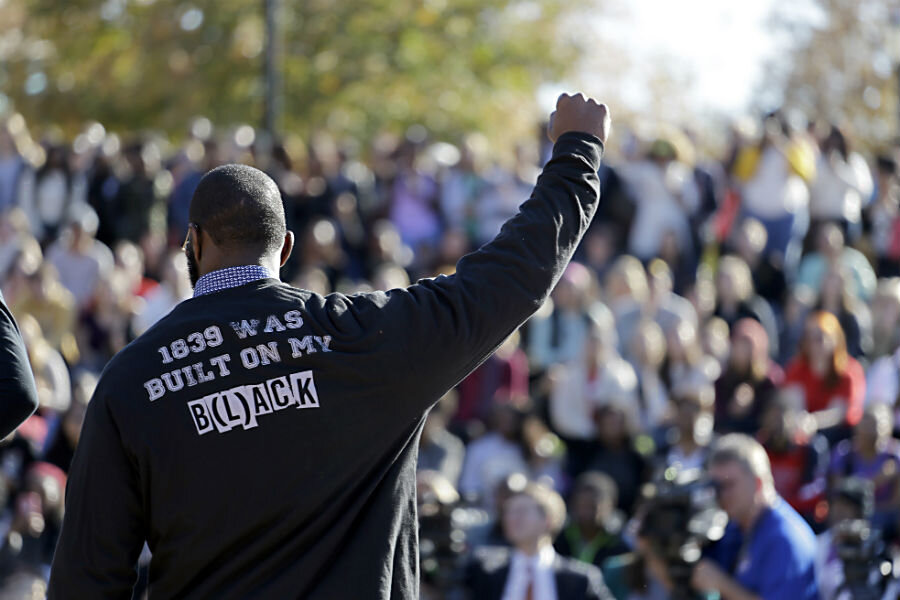Swastika in Mizzou bathroom: Hoax or hate graffiti?
Loading...
In recent days, conservative media outlets have raised questions about the validity of reports that a swastika was scrawled on a bathroom wall with feces in a residence hall bathroom at the University of Missouri.
Because the swastika graffiti was considered a tipping point for students, whose protests on campus this week led to the resignation of university President Tim Wolfe, there has been speculation as to whether or not the swastika is fact or fiction.
Skeptics of the incident, such as The Federalist’s Sean Davis, say the lack of evidence suggests the swastika was a hoax.
“While a mere absence of evidence is not synonymous with evidence of absence, the complete lack of any verifiable photographic evidence of the alleged poop swastika and the lack of any named eye witnesses raises serious questions about the veracity of a racially charged incident of vandalism that eventually led to the resignation of the University of Missouri’s two top administrators,” Mr. Davis wrote Tuesday.
The swastika was first reported by Residence Halls Association president Billy Donley, who Davis claims made up the incident to fuel liberal campus activists.
But a police report filed on Oct. 29 by a campus police officer called to a residence hall on Oct. 24 at 2:12 am, could lay such speculation to rest. “A swastika was drawn on a restroom wall by an unknown subject with feces,” wrote the officer, whose identity is censored from the report.
Before the police report confirmed the swastika suspicions, many on the Mizzou campus felt they had reason to believe the reports after a similar incident occurred this spring. In April, Mizzou freshman Bradley Becker was charged with second-degree property damage motivated by discrimination, a felony, after he admitted to burning multiple swastikas on a ceiling stairwell with the words "You have been warned."
But Mizzou is not alone in experiencing such hate speech on campus. In a 2014 survey published by the Louis D. Brandeis Center for Human Rights Under Law and Trinity College, 54 percent of Jewish college students felt subject to anti-Semitism on campus during a six-month period.
Trinity surveyed 1,157 self-identified Jewish students at 55 university and four-year college campuses.
The data suggest there is under-reporting of anti-Semitism through the normal campus channels. One reason might be a belief that the authorities are not sympathetic to such complaints; another perhaps might be fear of worrying parents and family; or that some students simply are unaware of the process for reporting such incidents.
“We’re in a period of hysteria about words and symbols and an inability to understand the context in which words and symbols are used,” Wendy Kaminer, a lawyer and free-speech advocate, told the New York Times. Some advocates and educators, such as Ms. Kaminer, argue that universities must foster conversations about potentially disturbing and hurtful material, to better prepare students for respectful relationships post-graduation.
Mark Auslander, an anthropology professor at Central Washington University, tells the New York Times that he agrees.
Universities exist, he says, to forge “enlightened citizens and moral leaders who have the capacity to listen to each other and arrive at reasoned judgments, and to understand the relationship between hate speech and free speech.”
Meanwhile, a 19-year-old man accused of making online threats against black students and faculty at the University of Missouri campus in Columbia is scheduled to make his first court appearance.
The Associated Press reports that Boone County's chief sheriff's deputy, Maj. Tom Reddin, says Hunter M. Park of Lake St. Louis is scheduled to be arraigned about 1:30 p.m. Thursday. Park is charged with felony making a terroristic threat.
Material from the Associated Press was used in this story.






